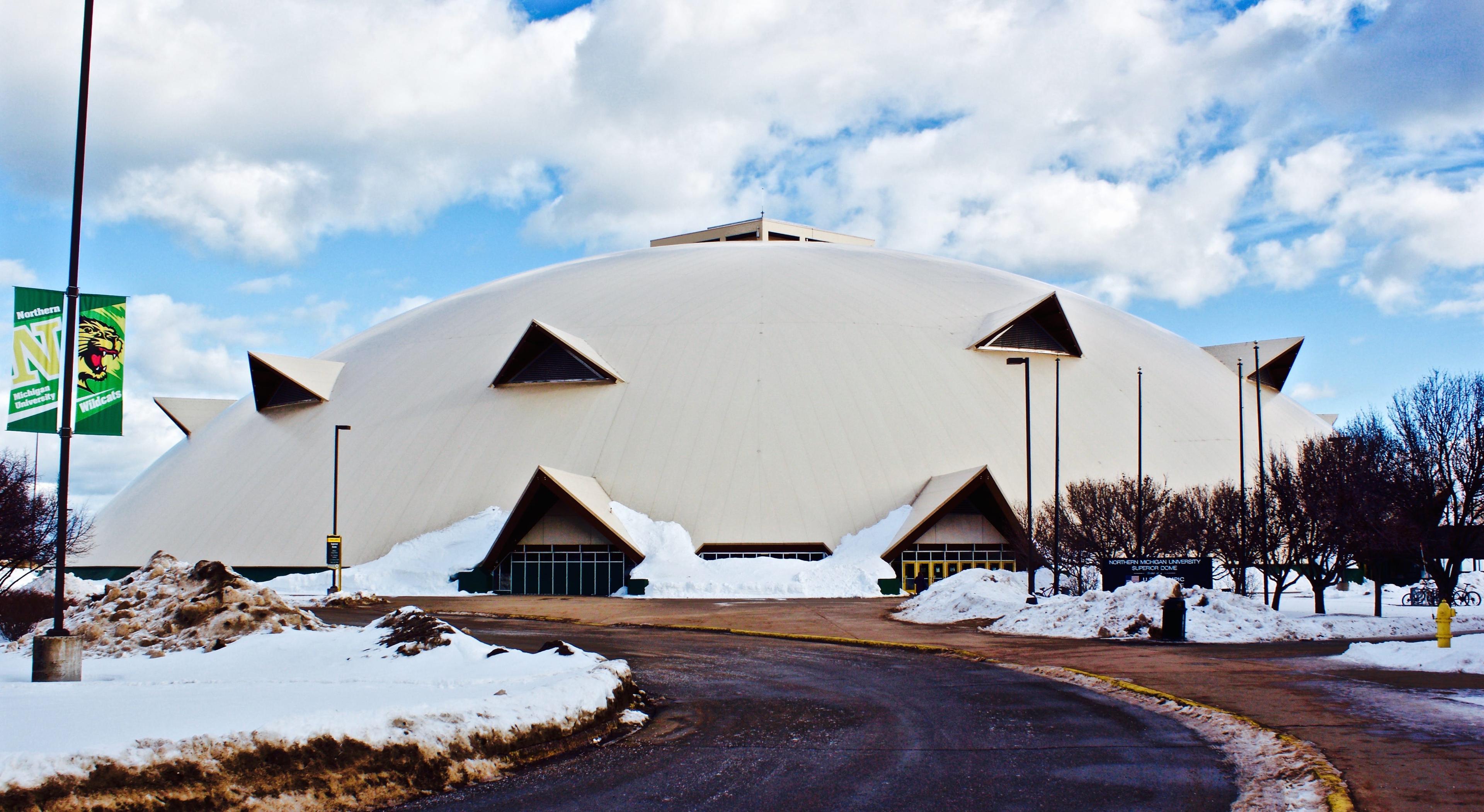Beyond the Card: How Marquette’s Superior Dome Fosters Health and Community
Julie Bitely
| 4 min read

You can’t miss Northern Michigan University’s (NMU) 14-story Superior Dome. The world’s largest wooden dome encompasses 5.1 acres and can hold a staggering 16,000 people. While its size gets most of the attention, the structure’s truly outstanding quality is in its ability to bring people together on an everyday basis. This gigantic building is big enough to host university-sized football games, but intimate enough to forge friendships and community connections. Through a unique partnership between NMU, Blue Cross Blue Shield of Michigan, and U.P. Health System - Marquette, the dome hosts open walking hours that are free to the public. Prior to the partnership forming in 2010, residents had to pay to walk the dome. The complimentary access allows students, stay-at-home-moms and their toddlers, business people, retirees and seniors to stay active throughout the year. It also fosters a sort-of bygone town square, where people know your name and nod and call out a greeting as they pass by. Carol and Gerald Anderson like to bring their two-year-old grandson, Jordan, to the dome once or twice a week. If the facility’s artificial turf is rolled out, the toddler can kick a ball around and play with other kids. The couple have made friends through their walks around the facility’s indoor track and say having a warm, dry place to exercise during the long Upper Peninsula winters keeps them from being homebound. “We absolutely would be lost without the dome,” Carol Anderson said. “We are really grateful to Blue Cross and the sponsorship.” NMU Associate Athletic Director Carl Bammert oversees operations at the dome. He knows many of the senior citizens who walk regularly by name. He said during the school year, some of those seniors have ended up adopting college students who might not have family nearby. Intergenerational friendships have been forged over Sunday dinners and Christmastime cookies, Bammert said. The daily movement is important for health, but Bammert suspects many people also come to see familiar faces and chat about their lives. “They’re here to walk, but it’s more social than anything,” he said. For Jake Winkler, a junior at the university, the dome gave him a hobby and opened up a new group of friends. “I started running just because I was bored and looking for something to do,” he said. A fellow student noticed his speed and the pair went on to form a cross country club team. “I’ve just loved it ever since then,” Winkler said. Echoing a common refrain, he especially loves it during the winter. “It’s great because while I can run outside, I’m worried about trying to find stable footing and maybe twisting an ankle or spraining an ankle or slipping on the ice,” he explained. “Having the dome really helps because I have a track now to run on at all times of the year.” On a recent Tuesday, Kim Pond met up with Stephanie Gordon at the dome with their kids. She said it beats staying at home watching TV. “Coming to the dome gets us out of the house and we come here with other mom friends and other little friends and we get to talk and just play around and it keeps up our friendships and our health and wellbeing,” Pond said. Gordon likes knowing that her children see her engaging in physical activity most days of the week. She often runs the bleachers or does calisthenics exercises while her kids play, something she probably wouldn’t be able to do in the winter without the dome. “Living in the U.P., having long winters is just part of life. I think that having the dome here is a real blessing because it does give you a place to go that’s warm and it’s a big enough area where the kids can kind of run around and do something active if we’re unable to get outside,” Gordon said. Learn more about the dome here and by listening to the stories in the podcast above.





